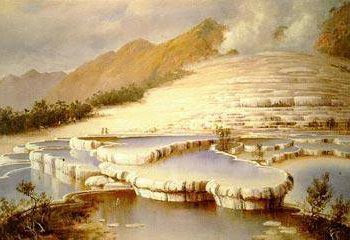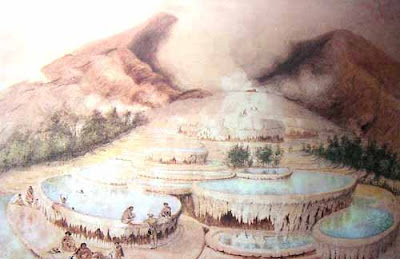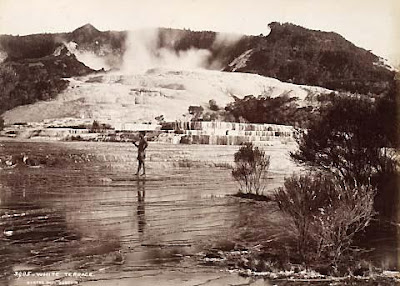If you have not been wondering such things, well then congratulations. You are not a weirdo. Or a paleontologist.
These are the questions that keep paleontologist up at night (probably playing with themselves to such thoughts. Probably). They finally came up with the answer. 'Dinos made love like dogs'.
I am going to give you a moment or two to absorb this shocking revelation by the researchers.
'All dinosaurs used the same basic position to mate,' said Dr Beverly Halstead, an English researcher who spent too much time on this issue. 'Mounting from the rear, he put his forelimbs on her shoulders, lifting one hind limb across her back and twisting his tail under hers.' Well!
| Most researchers concluded that dinosaurs had sex like |
| Pelecanimimus dinosaurs mating - these bird-like creatures lived 120 million years ago during the Cretaceous period |
No penis is needed to perform a "cloacal kiss." But some birds have penises and crocodiles sport penis-like "intromittent organs," and male dinosaurs might have had something similar. As you might imagine, a dinosaur penis might have been pretty big--perhaps up to 12 feet in length for T. Rexes.
But how did Mr. Dino ever get his cloaca near Ms. Dino's? By mounting her from behind. At least that's the view of many paleontologists, including one Beverly Halstead, an Englishman who became known for his candid talk about dinosaur mating before his death in 1991. For an article that appeared in the now-defunct science magazine "Omni" magazine in 1988, Dr. Halstead said:
All dinosaurs used the same basic position to mate. Mounting from the rear, he put his forelimbs on her shoulders, lifting one hind limb across her back and twisting his tail under hers to align the cloaca.
| I am going to assume that all that liquid is from both of them. Orgasmic |
Some of Halstead's present-day counterparts concur that that's the way dinos did it.
"I don't think there's much doubt about that," Dr. Gregory M. Erickson, an evolutionary biologist at Florida State University, told The Huffington Post in a telephone interview. But, he acknowledged, "It must have been a hell of a thing to see."
| This does not look safe. |
So what do you think of this discovery? Are geoscientists venturing into matters that don't help us grow or is such discoveries useful for the growth of earth sciences? Let me know in the comments below.
Follow us @rocKeSci
Like our page Rocke Scientist
More images for you to pleasure yourself with:
40 Dinosaurs Having Sex (NSFW if You Are a Dino)
Sources
Daily Mail
Huffington Post
Buzzfeed









